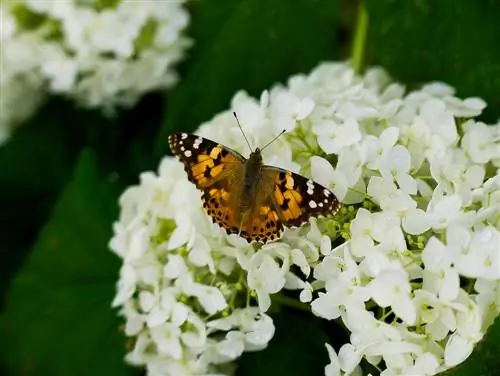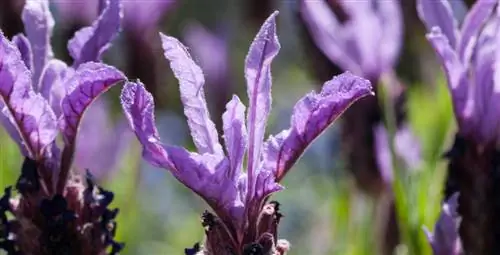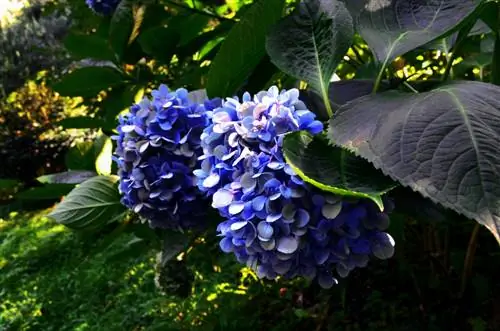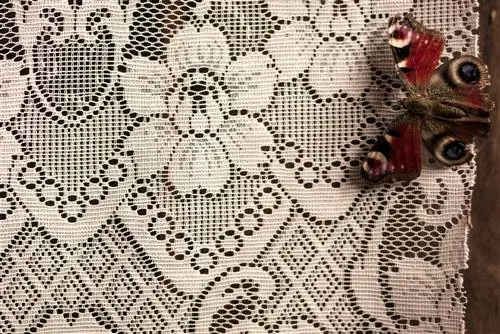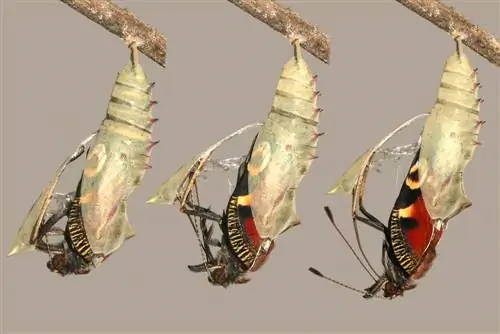- Author admin [email protected].
- Public 2023-12-16 16:46.
- Last modified 2025-01-23 11:22.
Hydrangeas have been criticized for being pseudo-butterfly-friendly. The magnificent flowering bushes are blamed for a serious lack of pollen and nectar. You can find out here whether this ecological criticism applies to all types of hydrangeas. Tips worth reading about butterfly hydrangeas for beds and balconies.

Are hydrangeas good for butterflies?
Most garden hydrangeas are useless to butterflies because they have sterile flowers with little nectar and pollen. However, there are butterfly-friendly varieties such as the butterfly hydrangea 'Butterfly', climbing hydrangea 'Crug Coral' and panicle hydrangea 'Kyushu', which offer plenty of nectar and pollen.
Are hydrangeas valuable for butterflies?
Most garden hydrangeas are useless to butterflies. Country hydrangeas usually thrive withsterile flowers that do not produce nectar or pollen. Sometimes the flower balls of a garden hydrangea (Hydrangea macrophylla) have fertile (fertile) flowers, which are of course hidden under the densely packed false flowers, out of reach of butterflies and bees.
But there is hope for the butterfly and bee friendly garden with hydrangeas. Please read on.
Which hydrangeas are friendly to butterflies?
Hydrangea breeders are responding to increasing demand for insect-friendly varieties. These hydrangea varieties are hardy, easy to care for, decorative andbutterfly-friendly:
- Butterfly hydrangea 'Butterfly' (Hydrangea paniculata), white flower spikes, flowering period from June to September, height 150-200 cm.
- Climbing hydrangea 'Crug Coral' (Hydrangea petiolaris), coral-pink flowers from June to August, climbs up to 4 m high.
- Panicle hydrangea 'Kyushu' (Hydrangea paniculata), white flower panicles, flowering period from July to September, height 225-300 cm.
When and where do I plant a butterfly hydrangea?
The butterfly hydrangea 'Butterfly' is actually a panicle hydrangea (Hydrangea paniculata). To ensure that the hydrangea keeps what the name promises, these importantplanting criteria must be observed:
- The best planting time is in spring from mid-May.
- The ideal location is partially shaded, optionally sunny.
- The optimal soil condition is fresh to moist, humus, nutrient-rich, low in lime and acidic with a pH value between 4.0 and 6.0.
- The planting depth must be measured so that the root disk is flush with the garden soil.
- Planting distance in row planting is 50 cm to 80 cm, or 1 specimen per m².
How do I care for a butterfly hydrangea?
Planted in a partially shaded location in acidic soil, the butterfly hydrangea proves to be aneasy-care ornamental plant. It is important to note a high water and nutrient requirement and limited winter hardiness in the first few years:
- If the soil is dry, water immediately with rainwater.
- From March/April to the beginning of August, add liquid hydrangea fertilizer (€8.00 on Amazon) to the irrigation water every week.
- Mulch the bedding hydrangea with straw and coniferous twigs before the first frost.
- Potted hydrangeas ideally overwinter frost-free.
- Prune to 25 cm in March.
Tip
Butterfly-Friendly Alternatives to Hydrangeas
When looking for butterfly-friendly hydrangea alternatives, you can choose from plenty: Beard flowers (Caryopteris clandonensis) ignite blue or white flower fireworks from August to October with a top nectar value of 4. With furious flower spikes and sweet The scent of a butterfly lilac (Buddleja davidii) invites you to harvest nectar from July to September. The raspberry bush (Rubus ideaus) is home to 12 species of bees and 74 species of butterflies.

